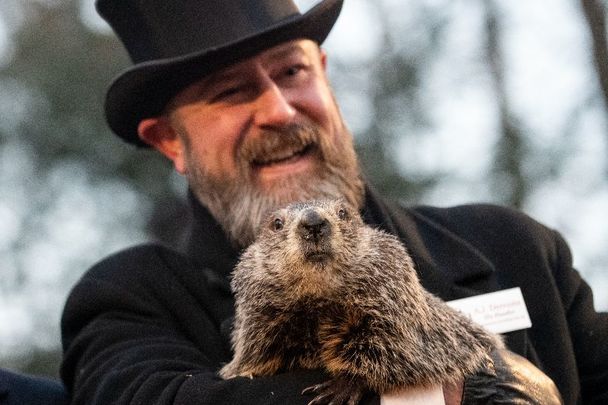Groundhog Day predicts the end of winter with the appearance of a shadow under this furry mammal, but the origins of the practice lie with a witch of Celtic myth, Imbolc, the holiday associated with St. Brigid and Roman hedgehogs!
Every February 2, crowds gather in Punxsutawney in western Pennsylvania, to watch as a groundhog - "Punxsutawney Phil" - emerges from hibernation. If Phil sees his shadow, there will be six more weeks of winter; if he doesn't, it means an early spring is on the way.
(For 2025, Punxsutawney Phil predicted six more weeks of winter after seeing his shadow!)
The tradition dates back centuries and enjoyed a boost in popularity thanks to Bill Murray's 1993 film "Groundhog Day." However, the Irish roots of Groundhog Day are lesser-known.
Imbolc
The roots of Groundhog Day can be traced to the Irish Celtic festival, Imbolc, which marks the beginning of spring. Celebrated on February 1 and associated with the goddess of fertility, now known as St. Brigid, Imbolc marks the halfway point between the winter solstice and the spring equinox. It is a celebration of the upcoming spring and the longer days ahead.
Celtic fertility goddess Brighid
It was said that on the eve of Imbolc, February 1, the Celtic fertility goddess Brighid was said to travel from home to home granting blessings to virtuous inhabitants while they slept.
The people even left milk and food for Brighid as she went about her travels. The goddess was believed to have had the power to shift the season from the months of darkness to the months of light, and people would light candles to symbolize this.
The Cailleach / the witch
Fire was always a central theme in this battle between winter and spring. In Celtic myth, it was said that an old woman or witch, known as the Cailleach, gathered firewood for the rest of winter.
A dark figure the Cailleach wished winter to last longer and would ensure February 1 was bright and sunny so she could collect enough wood for the rest of the winter. If the day was dark and cloudy it means the Cailleach would sleep and be unable to gather more would, therefore spring would surely arrive soon.

Love Irish history? Share your favorite stories with other history buffs in the IrishCentral History Facebook group.
Catholic Candelmas
Eventually, these pagan traditions merged with Christianity and became what is known in the Catholic Church's calendar as Candlemas. Celebrated on February 2, Candlemas is the commemoration of the purification of the Virgin Mary and the presentation of Christ in the Temple. Candles were traditionally blessed at this festival.
It's believed that if there's bright weather on Candlemas there would be more bad weather to come (just like the Cailleach).
A traditional Candlemas poem goes:
If Candlemas be fair and bright
Then Winter will have another flight;
If Candlemas brings clouds and rain,
Winter will not come not again.
Roman Hedgehogs
You might well ask where the groundhog comes into the telling of this tale. For that, we must look back to the ancient Romans who also believed they could predict the year's weather however in their case it was linked to soothsaying.
The Romans looked to hedgehogs for guidance. It was said that if during hibernation, he (the hedgehog) looks out of his den on Feb 2 and sees his shadow it means there is a clear moon and six more weeks of winter so he returns to his burrow.
This tradition was carried through Europe, including in Germany. It was with the arrival of Germans to Pennsylvania that they took up the tradition once more. However, as hedgehogs are not native to the state they turned to the now-famous groundhog for their predictions.
So as Wiarton Willie in Wiarton, Ontario, and Punxsutawney Phil in Punxsutawney, Pennsylvania are held aloft on February 2 this year, remember the ancient Irish and European history of this day, and let's all pray for an early spring.
*Originally published in 2021. Last updated in February 2025.




Comments